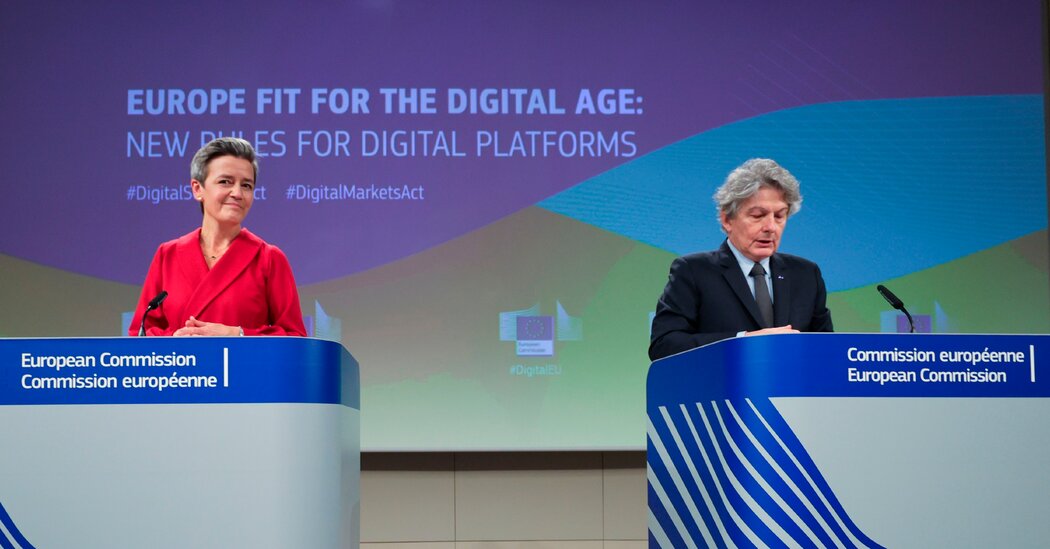Trump and Europe’s Battle Over Free Speech and Digital Regulation
In recent months, the relationship between the Trump administration and various European nations has become increasingly fraught. The points of contention include tariffs on goods, differing stances on the war in Ukraine, and now, a divisive issue surrounding free speech, particularly in the digital landscape.
The Digital Services Act: A Legal Framework in Question
The European Union (E.U.) is currently enforcing its Digital Services Act, introduced to combat the dissemination of illegal content and online disinformation. This legislation is poised to issue significant penalties against major U.S. tech companies, including Elon Musk’s platform, X, which is under scrutiny for purported violations of the act. Expected in the coming summer are fines and mandatory changes to business practices.
Implications for American Values and Free Speech
Trump’s administration views these E.U. regulations as a threat to what they define as free speech, which they argue allows for unrestricted expression from certain political perspectives. This has been underscored by Vice President JD Vance’s claims that the E.U. is engaging in “digital censorship,” aimed particularly at curbing far-right voices.
Transatlantic Tensions and Free Speech
The ongoing dispute signals a deeper disagreement on the transatlantic approach to free speech. As noted by David Salvo from the German Marshall Fund, “We’re now at this impasse: The free speech debate is affecting every aspect of the trans-Atlantic relationship.”
Trade-offs Between NATO Support and Speech Standards
Vance indicated during a recent podcast that the U.S. could potentially link its NATO support to respect for American values regarding free speech. This is significant as Trump’s foreign policy has already suggested a reduction in U.S. commitment to European security based on economy-driven perceptions of reliability.
America’s Own Free Speech Challenges
This administration’s stance is increasingly complicated by its domestic policies. There have been reports of campus speech conflicts, arrests of activists, and attempts to regulate the press, raising questions about the consistency of their free speech advocacy.
European Justifications for Regulation
In response, European officials, including representatives from the European Commission, argue that their laws are designed to protect free speech by preventing platforms from promoting harmful content while allowing different forms of expression. “We’re not a Ministry of Truth,” emphasized Thomas Regnier, a spokesperson for the Commission, defending the intent behind the regulations.
Legal and Operational Landscape of the Digital Services Act
The Digital Services Act mandates that tech companies implement measures to address illegal content based on jurisdictional laws, focusing on transparent content moderation rather than outright prohibiting specific discourse. Former European Commission executive Margrethe Vestager clarified, “This is a question about how to make sure that your services are safe to use and respecting the law of the land where you do your business.”
Contextualizing U.S. and E.U. Differences
The contrast in approaches to free speech has historical roots. The E.U. has stricter regulations around hate speech and historical context, such as Germany’s prohibition of Nazi-related expression, while the U.S. prioritizes individual liberties more broadly with few restrictions, except for imminent dangers. Such divergences have become focal points in the political and cultural conversations of today.
Looking Ahead: Navigating Future Relations
The forthcoming months will serve as a critical test for both the E.U. and the Trump administration as they navigate these complex issues surrounding digital regulation and free speech. European officials have indicated their commitment to uphold their legal frameworks despite potential retaliatory measures from the U.S.
As these dialogues progress, it remains to be seen how both regions will reconcile their differing ideals in the face of an ever-evolving digital landscape.


